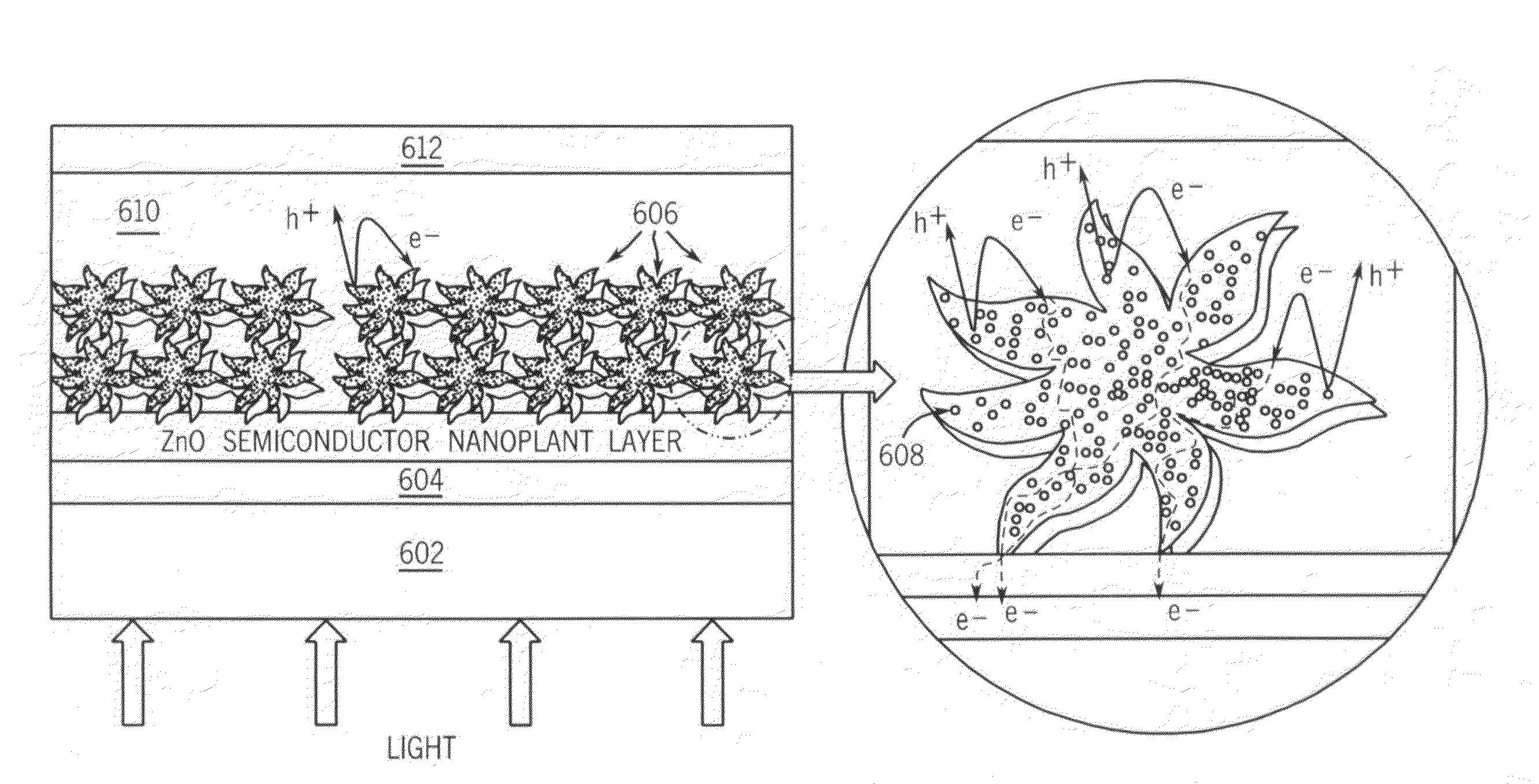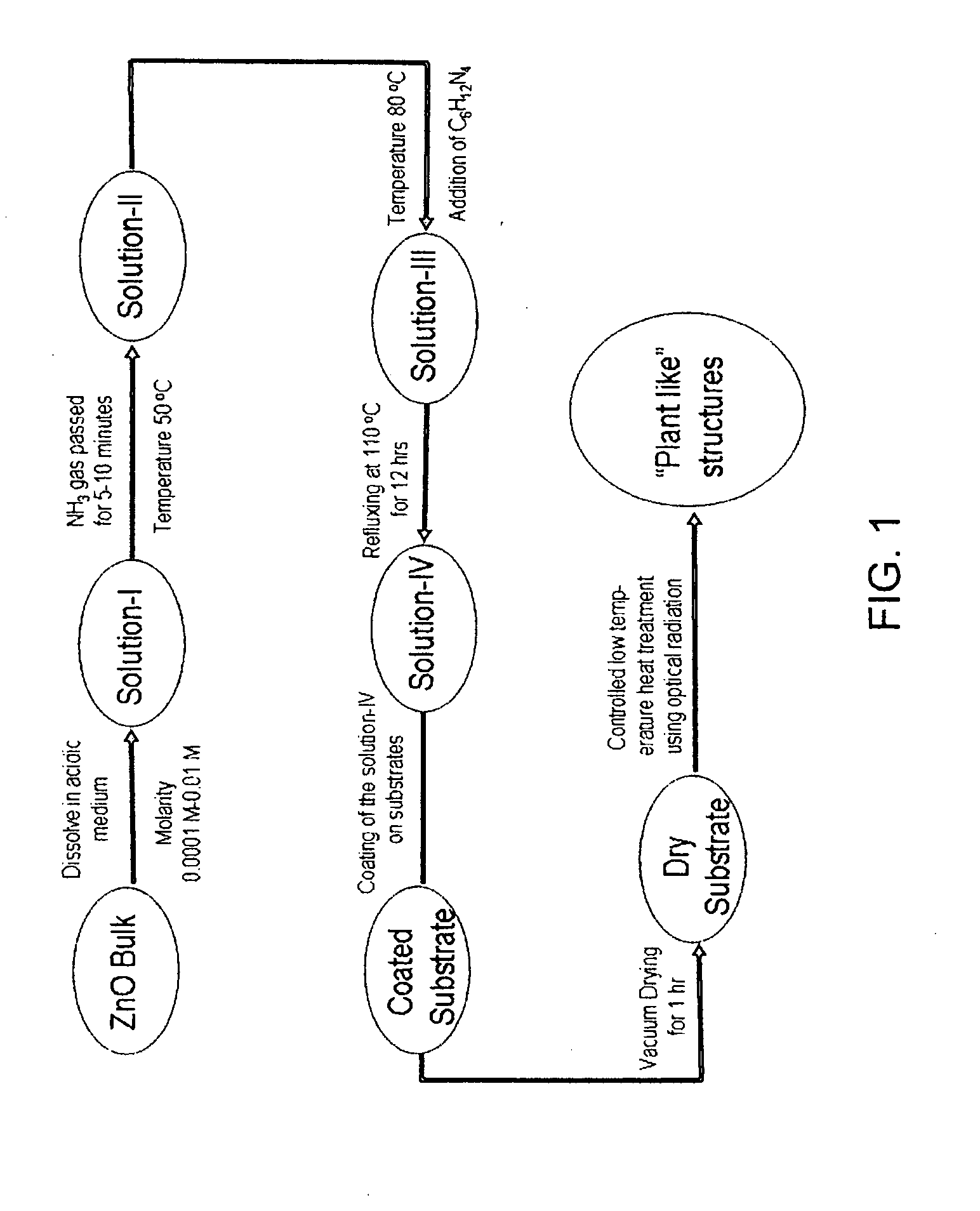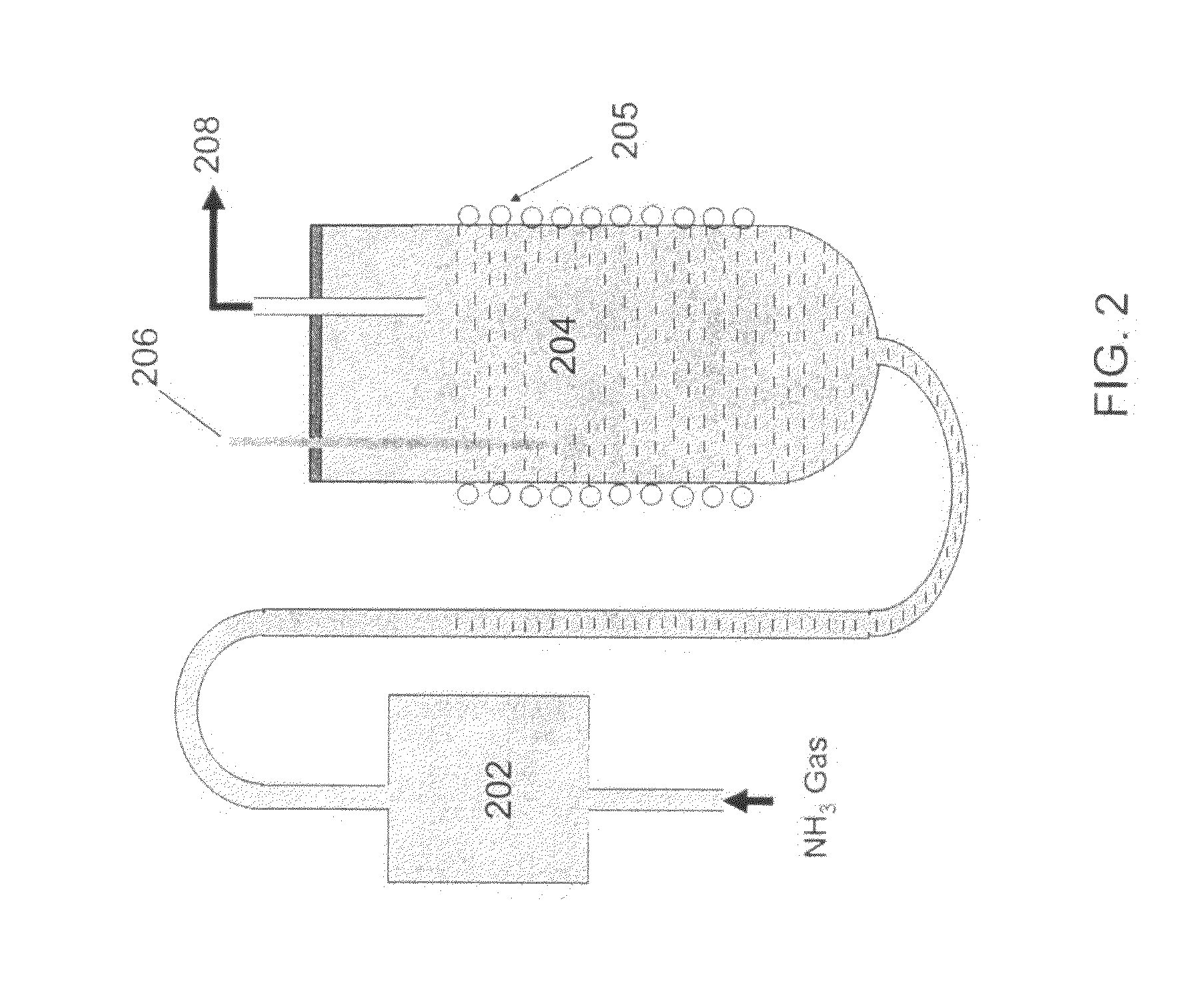METHODS OF FABRICATING NANOSTRUCTURED ZnO ELECTRODES FOR EFFICIENT DYE SENSITIZED SOLAR CELLS
a technology of zno electrodes and solar cells, applied in the direction of polycrystalline material growth, semiconductor/solid-state device details, radiation control devices, etc., can solve the problems of low energy conversion efficiency, low cost of producing such high-purity silicon, and solar energy is still not able to fully compete with fossil fuel energy sources. , to achieve the effect of high energy conversion efficiency in optoelectronics, high surface area and plant-like morphologies
- Summary
- Abstract
- Description
- Claims
- Application Information
AI Technical Summary
Benefits of technology
Problems solved by technology
Method used
Image
Examples
example 1
Formation of ZnO Nanostructures on Glass
[0044]About 10 μL of solution-IV (see FIG. 1) having [ZnO]=0.001 M was spin-coated onto a 1-cm2 glass substrate. The coated substrate was uniformly illuminated using the arrangement shown in FIG. 3 with an incandescent light bulb light source. The optical fluence was 10 Watt / cm2, and the time of illumination was 20 minutes. The local temperature attained at the top of the substrate was 170° C. A scanning electron microscope (SEM) image of the ZnO nanostructures on glass is shown in FIG. 7.
example 2
Formation of ZnO Nanostructures on Si(111)
[0045]About 10 μL of solution-IV (see FIG. 1) having [ZnO]=0.01 M was spin-coated onto a 1 cm2 Si(111) substrate. The coated substrate was uniformly illuminated using the arrangement shown in FIG. 3 with an incandescent light bulb light source. The optical fluence was 14 Watt / cm2, and the time of illumination was 20 minutes. The local temperature attained at the top of the substrate was 150° C. FIG. 8 shows an SEM image of the resulting ZnO nanostructures.
example 3
Formation of ZnO Nanostructures on Sapphire (0001)
[0046]About 10 μL of solution-IV (see FIG. 1) having [ZnO]=0.0005 M was spin-coated onto a 1-cm2 sapphire (0001) substrate. The coated substrate was uniformly illuminated using the arrangement shown in FIG. 3 with an incandescent light bulb light source. The optical fluence was 16 Watt / cm2, and the time of illumination was 20 minutes. The local temperature attained at the top of the substrate was 170° C. FIG. 9 shows an SEM image of the resulting ZnO nanostructures.
PUM
| Property | Measurement | Unit |
|---|---|---|
| diameter | aaaaa | aaaaa |
| width | aaaaa | aaaaa |
| width | aaaaa | aaaaa |
Abstract
Description
Claims
Application Information
 Login to View More
Login to View More - R&D
- Intellectual Property
- Life Sciences
- Materials
- Tech Scout
- Unparalleled Data Quality
- Higher Quality Content
- 60% Fewer Hallucinations
Browse by: Latest US Patents, China's latest patents, Technical Efficacy Thesaurus, Application Domain, Technology Topic, Popular Technical Reports.
© 2025 PatSnap. All rights reserved.Legal|Privacy policy|Modern Slavery Act Transparency Statement|Sitemap|About US| Contact US: help@patsnap.com



